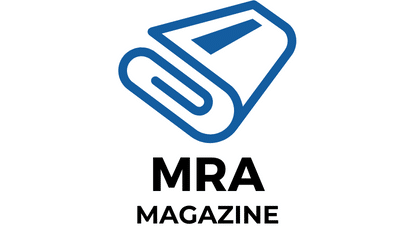What’s the Best Technique for Brewing Artisanal Coffee in a Small Kitchen?

Coffee brewing is an art that requires precision and a deep understanding of the beans’ nature. The method you employ, the water’s temperature, the grind’s size, the time it takes to brew – all these factors influence the final cup of coffee you pour. Today, we’ll delve into the best techniques to yield an artisanal cup of coffee, even in the smallest of kitchens.
Choosing the Right Coffee and Grind
The first step to brewing good coffee is selecting the right beans. Each variety of coffee has unique flavors and aroma profiles that can be enhanced or diminished depending on how you brew them. Do some research or talk to your local coffee roaster to find a bean that suits your taste.
Cela peut vous intéresser : What’s the Best Method for Childproofing a Home Office with Minimalistic Style?
Next, focus on the grind. The size of your coffee grounds is crucial in determining the flavor of your brew. For example, a fine grind is best suited for an espresso, while a coarser grind is ideal for a French press. Remember, the finer the grind, the faster the brewing time, and the more robust the flavor.
A good quality grinder is a must-have for any coffee aficionado. Burr grinders are the most recommended as they produce consistent grind sizes. Blade grinders, on the other hand, can result in uneven grounds, which can affect the taste of your brew.
En parallèle : How to Create an Efficient and Attractive System for Sorting Laundry in a Multi-User Household?
Water Matters: Purity and Temperature
Water plays a significant role in coffee brewing. The purity of the water can greatly affect the taste of your coffee. Use filtered or bottled water whenever possible, as tap water may contain chemicals and minerals that can alter the coffee’s flavor.
The temperature of your water is equally important. The best range for hot brewing is between 195 to 205 degrees Fahrenheit. Too hot, and your coffee will taste bitter; too cold, and your brew will be weak and under-extracted.
For cold brews, room temperature water is fine. The process is long (up to 24 hours), but the result is a smooth and sweet cup of coffee that is well worth the wait.
Choosing a Brewing Method
There are plenty of brewing methods to choose from, each with its unique characteristics and flavor profiles.
For simplicity and efficiency, the drip method is a tried-and-true choice. It’s easy to use, quick, and great for brewing multiple cups at a time. Plus, it requires less attention than other methods.
The French press is another popular method. It’s simple to use, and it allows the coffee grounds to steep in the water, resulting in a robust and flavorful brew.
The Aeropress is a newer addition to the coffee brewing world. It’s compact, making it ideal for small kitchens. It uses pressure to extract the coffee, resulting in a clean and rich cup.
Lastly, the pour-over method, such as a Chemex or V60, is a more hands-on technique that gives you control over the brewing process. It results in a clean, nuanced cup of coffee.
Mastering the Brewing Process
Once you’ve chosen your brewing method, it’s time to master the process. This involves measuring your coffee and water accurately, timing the brew right, and adjusting your technique to achieve the flavor you want.
With a drip machine, simply add your grounds to the filter, pour in the water, and start the machine. The water will heat to the right temperature and drip through the grounds, into your carafe.
For a French press, add your grounds, then your hot water. Stir gently, then let it sit for four minutes before pressing the plunger down slowly.
With an Aeropress, add your grounds and hot water, stir, then insert the plunger and press down slowly. The entire process should take about two minutes.
If you’re using a pour-over, add your grounds to the filter, then slowly pour hot water over them, making sure to wet all the grounds evenly. Let it sit for a minute, then continue pouring until you’ve reached the desired amount. This should take about three to four minutes.
In all methods, make sure to use the right amount of coffee and water. A good rule of thumb is one to two tablespoons of coffee per six ounces of water, but feel free to adjust to your preference.
Knowing how to brew coffee correctly is an invaluable skill that can turn an ordinary cup of joe into an extraordinary experience. By taking the time to understand the process and experimenting with different techniques, you will be well on your way to brewing artisanal coffee in your small kitchen.
Exploring Other Brewing Techniques
While the drip method, French press, Aeropress, and pour-over are among the most common brewing techniques, there are additional methods worth exploring.
The moka pot, also known as a stovetop espresso maker, is a classic Italian coffee maker that produces a strong, rich cup of coffee. It’s a simple two-chambered device that uses steam pressure to push hot water through the coffee grounds. The advantage of a moka pot is that it delivers a robust flavor similar to espresso but doesn’t require an expensive, bulky machine.
Another interesting method is the cold brew. It involves steeping coarse coffee grounds in cold water for an extended period (12-24 hours), then straining the mixture to get a coffee concentrate. This method reduces the acidity and bitterness of the coffee, resulting in a smooth, naturally sweet flavor. It’s perfect for those hot summer days when a refreshing iced coffee is needed.
Lastly, there’s the vacuum pot, or siphon brewing method. It’s a bit more complicated and may resemble a science experiment, but it’s an excellent method for those who value precision in their brewing process. Heat forces water from one chamber into another, where the coffee is brewed. Once the heat is removed, the brewed coffee siphons back into the lower chamber. The result is a clean, vibrant cup of coffee with a theatrical touch to the brewing process.
Conclusion: Embrace the Art of Brewing
Brewing artisanal coffee in a small kitchen is not just about the end product – the perfect cup of coffee. It’s also about the process. It’s about understanding the unique properties of different coffee beans, appreciating the impact of grind size, respecting the role of water purity and temperature, and mastering the art of coffee brewing.
Experiment with different methods – be it a French press, an Aeropress, a pour-over, a moka pot, or even a cold brew. Each brew technique will give you a different flavor profile, allowing you to appreciate the diverse world of coffee.
Remember, the journey to a good coffee cup is not about speed, but about patience, precision, and passion. Enjoy every step of it, from selecting your beans, grinding them, to the moment hot water interacts with the ground coffee. It’s all these elements combined that create the perfect brew.
So, roll up your sleeves, grab your favorite coffee maker, and start brewing. Your small kitchen is the perfect place to create an extraordinary coffee experience. Just remember, in coffee brewing, the magic is in the details. So, take your time and relish the process – every sip is worth it.
